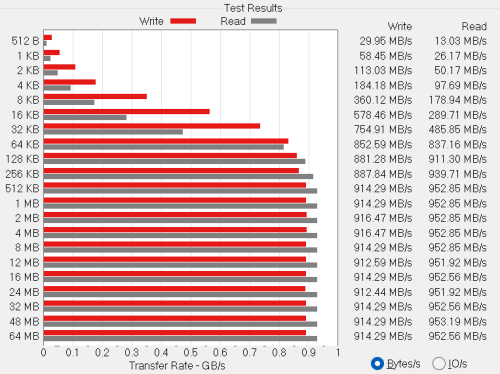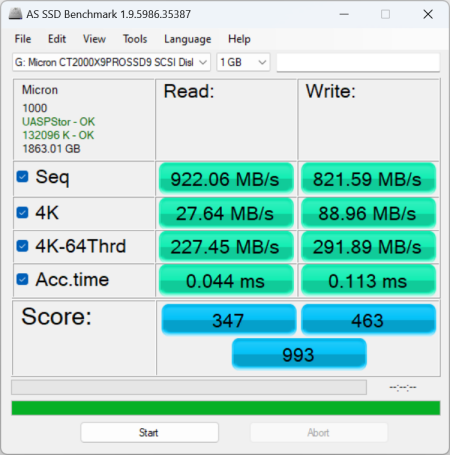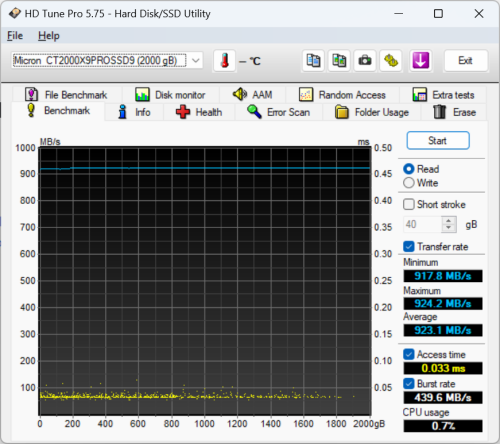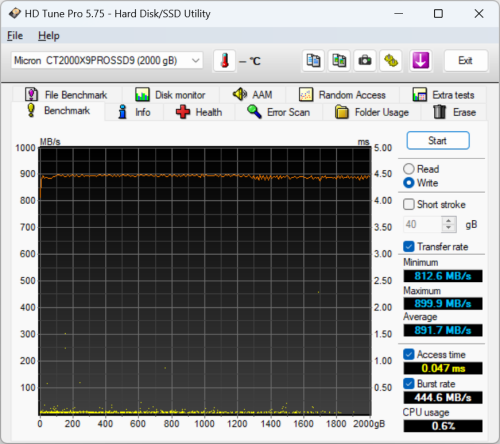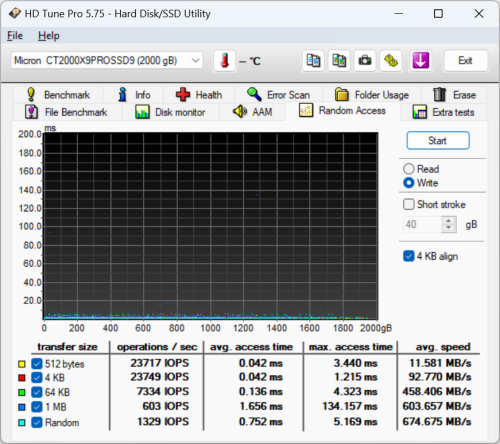![]()
![]()
Model: Silicon Power PX10 1TB Portable Solid State Drive
Manufacturer: Silicon Power
Provided By: Silicon Power
Silicon Power is a relatively new name in the storage industry. Founded in 2003 by a group of professionals specializing in international business, global marketing and technical engineering, the company has already established itself as one of Taiwan's top manufacturers. With an eye for attractive and versatile design, Silicon Power has built its brand around the concept that its customers deserve products that represent who they are in life and mirror their personality. The end result is a variety of uniquely designed storage products including USB flash drives, memory cards and solid-state drives (SSD).
This winter, Silicon Power unveiled its latest portable SSD, the PX10. Designed with content-creators and gamers in mind, this lightweight, pocket-sized SSD is constructed out of anodized aluminum and is tough enough to withstand accidental drops of up to 1.2m. On the inside, the PX10 is equipped with up to 4TB of NAND flash along with a USB 3.2 Gen 2 (10Gb/s) Type-C interface that will allow you to copy a 10GB 4K UHD video to your computer in as little as 10 seconds. To top it all off, the PX10 works with Windows, Mac OS X, Linux, Android and iOS as well as game consoles like the PS5 and Xbox.
The PX10 is available in 512GB, 1TB, 2TB and 4TB capacities. For this review, Silicon Power sent us the 1TB version of the drive which is capable of delivering up to 1,050 MB/s sequential read and write speeds.
![]()
Needless to say, this is only a taste of what the PX10 has to offer. To give you an idea of what to expect, we'll take a closer look at Silicon Power's latest portable SSD and then see how well it performs. Does the PX10 have what it takes? Can it deliver the value and performance we've come to expect from Silicon Power? Keep reading as we find out.
The PX10 comes in a small white box. The front advertises many of the drive's key features including its 1TB capacity, Type-C USB 3.2 Gen 2 interface, support for Apple ProRes 4K 60fps recording, compatibility with the PS5, and its military-grade, shock proof design. There is also a plastic window which lets you look inside the box and see what the drive looks like. The back of the box provides a bit more information regarding the PX1-'s specifications, system requirements and box contents. Inside, you'll find the SSD, a USB-C to USB-C cable and a small user manual.
![]()
Physical Features:
The PX10 is the lightest and thinnest external SSD in Silicon Power's product lineup. Measuring 103.4 x 33 x 10.3 mm and weighing a mere 33, the drive fits comfortably in the palm of a hand as well as your pocket.
![]()
The body of the PX10 is constructed out of aluminum and plastic and is available in your choice of a black or pink finish. The bulges on top of the drive are where the NAND flash and controller chips are located. This design not only makes the drive very thin, it helps dissipate heat. The use of aluminum also makes the PX10 surprisingly tough. The drive is military-standard certified and can survive accidental drops of up to 1.2m.
![]()
The PX10's USB 3.2 Gen 2 Type-C port is located on the end of the drive. This interface not only transfers data, but provides power for the device. To the right of the USB port there is also a small LED that lights up white when the PX10 is transferring data.
![]()
Silicon Power doesn't say which SSD or USB to NVMe bridge controllers the PX10 uses. While the USB bridge controller is a bit of a mystery, we can tell by looking at the firmware (EHFMC0.0) that the drive most likely uses Silicon Motion's SM2263XT controller. This DRAM-less, PCIe Gen 3 x4 controller is powered by a dual ARM Cortex CPU and offers four channels with up to four chip enables (CE) per channel and features Silicon Motion’s proprietary NANDXtend error-correcting code (ECC) technology.
The test system used in this review is equipped with an AMD Ryzen 9 7900x CPU, Gigabyte B650E AORUS Master motherboard, 32GB (16GB x 2) of Corsair Vengeance 5200MT/s DDR5 memory, Samsung 990 Pro 2TB SSD and a GIGABYTE GeForce GTX 1060 WINDFORCE OC 6G graphics card. For the operating system, I used the latest version of Windows 11.
To test the performance of Crucial's T500 SSD, I ran a series of benchmarks using CrystalDiskMark, ATTO Disk Benchmark, AS SSD, HD Tune Pro, Anvil's Storage Utilities, Iometer and PCMark. For comparison, I've also included test results from the Crucial T500, ADATA SE920, ADATA LEGEND 970, Crucial T700, Solidigm P44 Pro, Samsung 990 PRO, ADATA LEGEND 960, Crucial P3 Plus, SK hynix Platinum P41, Silicon Power XS70, WD_BLACK SN770, ADATA XPG ATOM 50, ADATA XPG GAMMIX S70 Blade, Crucial P5 Plus, Plextor M10PY, ADATA XPG GAMMIX S70, Sabrent Rocket 4 Plus, WD_BLACK SN850, Silicon Power US70, ADATA XPG GAMMIX S50 Lite, Crucial X10 Pro, Crucial X9 Pro, ADATA Elite SE880, Kingston XS2000, ADATA XPG ATOM 30, Samsung 980, Silicon-Power UD70, Crucial P2, SK hynix Gold P31 and Crucial P5.
![]()
Looking at the screenshot above, you can see that the PX10 performs equally well with both incompressible (0%) and compressible (100%) data.
CrystalDiskMark 8.0.4:
First, I ran a few quick tests using CrystalDiskMark. This benchmark measures the performance of a storage device by testing its sequential and random read and write speeds. For this test, we're using the peak and real world profiles.
![]()
According to Silicon Power, the PX10 is capable of reading and writing at 1,050 MB/s when plugged into a USB 3.2 Gen 2 port. While the drive performed well, it came up a bit short of this number in CrystalDiskMark's sequential read and write tests.
![]()
As you'd expect, the PX10 wasn't as fast when tested with the "real world" profile which uses a single thread and a much lower queue depth. Nevertheless, it was still able to read at 859 MB/s and write at more than 920 MB/s.
ATTO Disk Benchmark 4.01:
I also used ATTO Disk Benchmark to test the PX10's sequential read and write speeds. The tests are run using blocks ranging in size from 512B to 64 MB and the total length set to 256MB.
When tested with ATTO, the PX10's read speeds topped out at about 957 MB/s and its write speeds at 979 GB/s.
AS SSD:
AS SSD is a benchmark designed specifically for solid state drives. The application contains five synthetic tests which are used to determine the sequential and random read and write performance of a drive.
AS SSD also includes a copy benchmark. This test copies an ISO (two large files), program (many small files) and game (small and large files), returning the speed and duration of each.
HD Tune Pro 5.75:
Next, I ran a series of tests using HD Tune Pro. This hard disk utility measures a drive's performance by testing its sequential read and write speeds as well as its access time, burst rate and CPU usage. For this review, I'm also going to use it to benchmark the PX10's random read and write speeds, random access times and the number of operations per second.
The PX10 performed relatively well when benchmarked with HD Tune. The drive had average read and write speeds of 885.9 MB/s and 881.2 MB/s, respectively.
When reading 4KB blocks, the PX10 reached 13,316 IOPS and had an average speed of 52.016 MB/s. The drive was slightly faster when writing, reaching 13,973 IOPS with an average speed of 54.584 MB/s.
Anvil's Storage Utilities:
Anvil's Storage Utilities is another benchmark designed with SSDs in mind. The standard storage benchmark measures a drive's performance by testing its transfer speeds, access times and IOPS.
![]()
Iometer:
Lastly, I ran a series of tests using Iometer. This tool can be configured to benchmark a number of things. In this case, I used it to measure the PX10's read and write speeds and the number of operations per second. The tests were run using random bytes and a queue depth of 3.
![]()
The PX10's performance was very similar to what we saw in our other tests. The drive was able to read at 956.31 MB/s and write at 974.44 MB/s.
![]()
The PX10 wasn't one of the faster drives we've tested when it came to random reads and writes. In our tests, the drive was able to read at 153.91 MB/s and write at 316.57 MB/s.
![]()
Silicon Power really doesn't say what the PX10 is capable of in regards to IOPS. In our tests, the drive reached 39,401 random read IOPS and 81,401 random write IOPS. As with most drives, the PX10 performed better with more threads and at higher queue depths. With four threads and the queue depth set to 32, it reached 99,028 random read IOPS and 87,916 random write IOPS.
Vantage PCMark 8 - Storage Test:
PCMark 8 is a complete benchmark for Windows. It includes five benchmark tests, each designed around a specific scenario. The storage benchmark measures drive performance using real-world traces recorded from Adobe Creative Suite, Microsoft Office and a selection of popular games.
![]()
PCMark 10 - Full System Drive Benchmark:
PCMark 10's Full System Drive Benchmark uses a wide-ranging set of real-world traces from popular applications and common tasks to fully test the performance of the fastest modern drives. This benchmark produces an overall score as a measure of drive performance. Comparing devices is as simple as comparing scores. The tests also measure and report the bandwidth and average access time performance for the drive.
![]()
Silicon Power's PX10 portable SSD is a great choice for content-creators, professionals or gamers looking for a fast, yet affordable, storage solution that they can use to securely store their data while on the go. Constructed out of aluminum, this ultra-compact, lightweight drive not only looks great, it's durable enough to handle whatever life throws at it, including accidental drops of up to 1.2m. The PX10 also packs up to 4TB of NAND flash for hours worth of 4K 60fps video and, with its USB 3.2 Gen 2 interface, you can transfer data to and from your computer, mobile device or game console at some respectable speeds. In our sequential read and write tests, the 1TB version of the PX10 was able to read at speeds as high as 1,002 MB/s and write at speeds in excess of 1,020 MB/s.
The Silicon Power PX10 is available now in 512GB, 1TB, 2TB and 4TB capacities and can be purchased directly from Silicon Power or through online retailers like Amazon.com. Prices currently range from about $60 up to $213 with the 1TB version reviewed here going for $90.

Highs:
- Available in 512GB, 1TB, 2TB and 4TB capacities in both pink and black
- Compact, pocket-sized design
- USB 3.2 Gen 2 interface
- Good sequential read and write speeds
- Works with Windows, Mac, Android, iPad, Linux, PlayStation and Xbox
- Includes high quality USB-C to USB-C 3.2 Gen 2 cable
- Supports Apple ProRes
- Reasonably priced
- 3 year warranty
Lows:
- Mediocre random read and write performance
- Does not support hardware-based encryption
